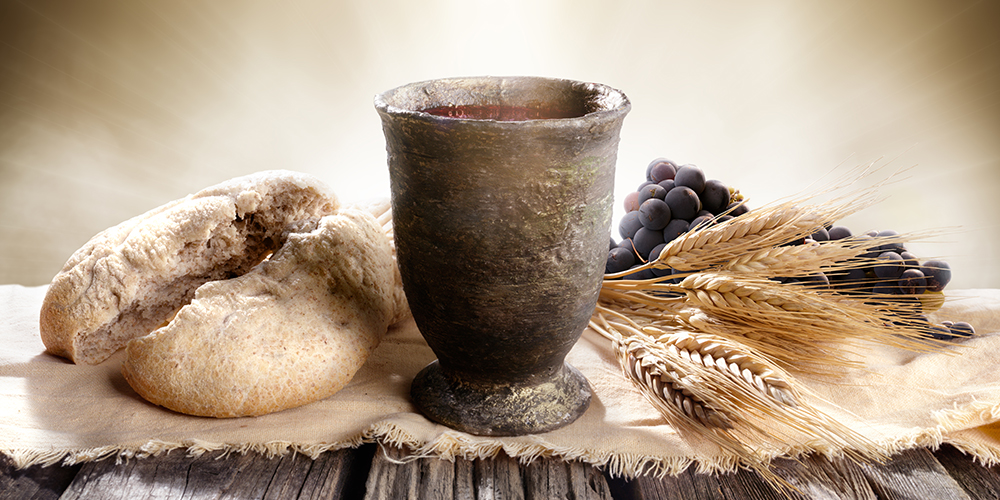While “the doctrine of the secret rapture of believers . . . as now taught . . . was certainly not part of the earliest Brethren thinking on prophetic matters,”1 it soon became so in both branches of the Brethren Movement through the teachings of John Nelson Darby who rediscovered biblical truth taught by the early church that had been lost over the centuries by most of Christendom. In fact, the fallout between Darby and Newton was occasioned in great part by the latter’s failing to embrace Darby’s teaching. One has even gone so far as to say, “it was a difference of opinion on this subject between two of their leaders which was the primary cause of the rupture.”2 That the “Blessed Hope” has long been a part of our heritage can be seen from the words of H. A. Ironside (1876-1951) in his defense of the Brethren. “Yes”, said he, “if this be heresy, ‘Brethren’ are heretics; for they do indeed teach that at the coming of the Lord to the air all His saints will be caught up to meet Him, and the world left to pass through the great tribulation.”3
Another glorious strand of Brethren heritage is that of global missions. Indeed, the young movement was missionary-minded from the outset.4 This began as early as 1829 with the departure of Anthony Norris Groves for Baghdad. He would eventually become known as the Father of Faith Missions.5 Already, in 1825, he had published a pamphlet, “Christian Devotedness,” in which we see the germ of the concept of ‘living by faith’ which became so significant in Brethren missiological thinking.6 Of Brethren assemblies in Britain, North America, and Australia, it has been suggested that “it may be that their expenditure, in proportion to their membership, on world-wide missionary work exceeded that of most Christian bodies . . .”7
To quote Frederick Tatford, “Many have been the missionary societies and organizations used of God in world evangelism during the nineteenth and twentieth centuries, but no single body perhaps more significantly than the assemblies of the brethren. . . . Over five thousand missionaries have gone from these assemblies to practically every area of the world, depending for their support solely on the faithfulness of God. The impact which has been made has been out of all proportion to their number or to the size and importance of the assemblies from which they went.”8 As a result, today, based on the 141 countries for which figures are available, there are at least 40,500 congregations worldwide, attended on any Sunday by about 3.6 million adults and children.9
Finally, this survey of Brethren ancestry would be incomplete without reference to its hymnody. This is true especially with the remembrance and worship of our Lord Jesus Christ in the weekly celebration of the Lord’s Supper. Its theologically rich and inner, reflective quality are likely due to “the considerable Quaker influx into the churches of the Brethren in the late 1830s.”10 There is nothing quite like it in the general run of today’s hymnology. It has been described as a “vehicle in sustained thought and language of practical grace and truth which sets the soul in communion with Christ and rises even to the Father.”11 But for the hymns, we would not know the inner persons of some of the movement’s earliest leaders, men like Chapman, Darby, Deck, Denny, and Wigram, to name a few, whose brief biographies appear in the pages of the book “Chief Men Among the Brethren.”
This then is the legacy bequeathed to us by the fathers and early pioneers of the Brethren movement. Given the principle of autonomy which characterizes the Open Brethren, what we do with it varies from assembly to assembly. Among the several features that, by and large, continue to characterize the Brethren today, perhaps none is more unique than the weekly gathering for the Breaking of Bread, a designation that early on came into use among us. Truth be told, it is here that many elements of our DNA find their fullest expression. For instance, based on a shared life rather than a uniform understanding of the Scriptures or on one’s particular church affiliation, all true believers are welcomed to the table to participate in the Lord’s Supper. The priesthood of all believers, without clergy-laity distinction, allows for all to worship the Lord in “spirit and truth” as led by the Holy Spirit. As part of that worship, the hymns we sing “strike a note of personal adoration and of identification with the sorrows of Christ,”12 not found in much of today’s hymnology.13 Take, for instance, the hymn of Edward Denny (1796-1889), which, like so many others is addressed to the Lord Himself, whom we know and sense to be present (Matt. 18:20) among us:
To Calv’ry, Lord, in spirit now
Our grateful hearts repair,
To dwell upon Thy dying love,
And taste its sweetness there.
Throughout my life, few have been the Lord’s Days that have not found me at the Breaking of Bread. My mother was brought to faith in Christ in the late 1930s and into assembly fellowship through the faithful testimony of a couple in upstate New Jersey. Doubtless, I would have accompanied her to the worship service even before I was born. Happily, my father was saved shortly after my birth. During my childhood, the family frequently moved, always finding an assembly in which to fellowship. Wherever we went we would immediately feel like part of the family, a worldwide family. Even today, when traveling and visiting an assembly for the first time, my wife and I always find that we already share personal friends and acquaintances. Such oneness in the Body of Christ, central to the thoughts of the early Brethren, can be nurtured by attendance at Brethren conferences as well as reading periodicals such as Cornerstone Magazine.
At the age of eleven I was baptized and welcomed to the Lord’s Supper. Not long afterwards, in fear and trembling, I stood and gave out a hymn, the first of many to follow. I can testify to the fact that there is something sobering and salutary to being brought face to face, on a weekly basis, with the touchstone of one’s faith, our Lord’s death, burial, resurrection, present intercessory ministry, and promised coming again. Maranatha!
“Remember your leaders,
those who spoke to you the word of God.
Consider the outcome of their way of life,
and imitate their faith.”
Hebrews 13:7 (ESV)
Conclusion.
Endnotes
1 Timothy Grass, Gathering to His Name, BAHN, Glasgow, 2021, p.106. Darby had started out as a historicist (Brethren Historical Review, vol. 20, 2024, p. 214). To this we might add the system of premillennial dispensationalism which Darby, among others, played an important role in systematizing and spreading. By and large, this system of biblical interpretation held the field throughout the evangelical world, including the Brethren, until the middle of the past century.
2 Shrubsole, W. (1907). Plymouth Brethren Hymnody. In J. Julian (Ed.),
A Dictionary of Hymnology (vol. 2, p. 898) Logos edition.
3 Henry (Harry) Allen Ironside, The Teaching of the So-called Plymouth Brethren: Is it Scriptural? Reply to an Attack in Dr. Strong’s “Systematic Theology”, New York, Loizeaux Brothers, p. 15. Unanimity on this matter among Open Brethren, as among evangelicals in general, has significantly eroded following WW2.
4 Ian McDowell, A Brief History of the “Brethren”, Victor Books, Sydney, Australia, 1968, p.19.
5 Robert Bernard Dann, Father of Faith Missions: The Life and Times of Anthony Norris Groves (1795-1853), Authentic Media, Waynesboro, Georgia, 2004.
6 Grass, p. 13.
7 Where Do We Go From Here? The Future of the Brethren. Report of addresses and Discussions at the Swanwick Conference of Brethren, September 1978, p.124
8 Frederick A. Tatford, That the World May Know, 10 volumes, Echoes of Service, 1982, Book jackets.
9 Series Preface to Philip Henry Gosse, A Biography by Douglas Wertheimer, BAHN, 2025
10 F. Roy Coad, A History of the Brethren Movement, Eerdmans, 1968, p.268.
11 Shrubsole, p.899
12 Coad, p.231.
13 There are exceptions of course such as The Power of the Cross by Getty and Townend (2005).

